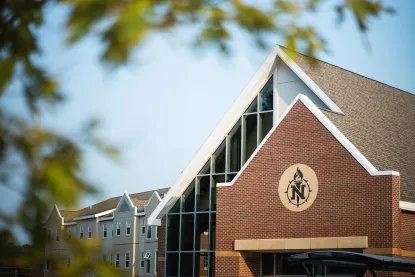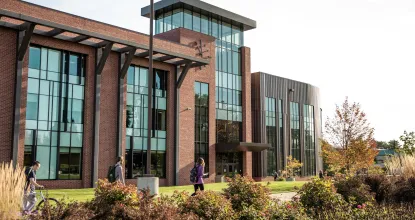
What is LEED®?
The Leadership in Energy and Environmental Design (LEED) Green Building Rating System™ is the nationally accepted benchmark for the design, construction, and operation of high-performance green buildings. LEED gives building owners and operators the tools they need to have an immediate and measurable impact on their buildings’ performance. LEED promotes a whole-building approach to sustainability by recognizing performance in five key areas of human and environmental health: sustainable site development, water savings, energy efficiency, materials selection, and indoor environmental quality.
How is LEED Developed?
The LEED Rating System was created to transform the built environment to sustainability by providing the building industry with consistent, credible standards for what constitutes a green building. The rating system is developed and continuously refined via an open, consensus-based process that has made LEED the green building standard of choice for Federal agencies and state and local governments nationwide.
What is LEED Certification?
The first step to LEED certification is to register your project. To earn certification, a building project must meet certain prerequisites and performance benchmarks ("credits") within each category. Projects are awarded Certified, Silver, Gold, or Platinum certification depending on the number of credits they achieve. This comprehensive approach is the reason LEED-certified buildings have reduced operating costs, healthier and more productive occupants, and conserve our natural resources.
NMU's LEED Efforts
2018
The Woods Awarded LEED® Green Building Certification - Silver.
2015
Jamrich Hall Awarded LEED® Green Building Certification - Certified.
2011
Hunt / Van Antwerp Lobby Renovation for LEED® Green Building Certification - Certified.
Meyland / Magers Lobby Renovation for LEED® Green Building Certification - Certified.
2010
Hunt Hall Awarded LEED® Green Building Certification – Silver.
2009
Staff member received LEED® Accredited Professional certification - Brandon Sager, LEED® AP
Registered Hunt / Van Antwerp Lobby Renovation for LEED® Green Building Certification - Anticipated Silver Certification.
Registered Meyland / Magers Lobby Renovation for LEED® Green Building Certification - Anticipated Silver Certification.
2008
Van Antwerp Hall Awarded LEED® Green Building Certification – Silver. First Silver Certified building in the Upper Peninsula.
Submitted Hunt Hall Renovation for LEED® Green Building Certification - Anticipated Silver Certification (38 Points).
Designing Quad II Lobby Renovations toward LEED-CI.
2007
Meyland Hall Awarded LEED® Green Building Certification –Certified (29 Points). First Certified Residence Hall in State of Michigan, Wisconsin, Minnesota, Ohio and Indiana. First Certified building in the Upper Peninsula.
Van Antwerp Hall submitted for LEED® Green Building Certification.
Hunt Hall Renovation designed toward LEED® Green Building Certification.
2006
Submitted Meyland Hall Renovation for LEED® Green Building Certification.
Van Antwerp Hall designed toward LEED® Green Building Certification.
2005
Began incorporating LEED into design of construction/renovation projects.
2004
Became a member of the U.S. Green Building Council (USGBC)
NMU Engineering & Planning Future Endeavors: All design/construction projects to strive toward attaining LEED® Green Building Certification.
LEED Certified Buildings
John X. Jamrich Hall
John X. Jamrich Hall LEED For Schools (V2009) – Certified
Sustainable Sites
-
Construction Activity Pollution Prevention
-
Alternative Transportation – Public Transportation
-
Alternative Transportation – Parking Capacity
-
Site Development – Maximize Open Space
Water Efficiency
-
Water use reduction
-
Low-flow plumbing fixtures used throughout building
Energy & Atmosphere
-
Fundamental and Enhanced Building Systems commissioning
-
Fundamental and Enhanced Refrigeration Management
Materials & Resources
-
Campus Recycling Program
-
Construction debris diverted from landfill
-
The use of regionally harvested and manufactured materials
Indoor Environmental Quality
-
Low-VOC materials chosen for construction materials and furnishings
-
Indoor air quality management during construction
-
Indoor chemical pollutant source control
-
No smoking policy
-
Thermal comfort designs and verification
Meyland Hall
Gunther C. Meyland Hall LEED® Green Building Certification - Certified
Site Opportunities
-
Erosion and sedimentation control reducing negative impact on water/air quality.
-
Alternative transportation: Constructed covered bicycle racks.
-
No additional parking constructed.
-
Maintain 60% of vegetated open space of site area.
-
Storm water management: Prevent approximately 404,200 gallons of storm water from entering the storm sewer system annually.
-
Light pollution reduction.
Water Efficiency
-
Reduced regulated water usage by 60%.
Energy & Atmosphere
-
Ozone Depletion: The building HVAC&R systems do not use CFC-based refrigerants.
-
Building systems commissioning.
Material & Resources
-
Campus recycling program.
-
Re-used 96% of existing building structure.
-
15% of materials used in construction contained recycled content.
-
Diverted 100% of waste from landfill. (Recycled 71 tons of metal.)
-
35% of materials used for construction were regionally manufactured within 500 miles of NMU.
-
ASC Certified Wood used in 11% of construction materials. (Wood Doors)
-
98% of occupied spaces have access to exterior views.
Indoor Environmental Quality
-
Low-VOC materials chosen for construction materials and furnishings.
-
Indoor air quality management, even during construction.
-
No smoking policy.
-
Green housekeeping program.
Architect: Integrated Designs Inc.
General Contractor: Gundlach-Champion Inc.
Maude L. Van Antwerp
Maude L. Van Antwerp Hall LEED® Green Building Certification – Silver
Site Opportunities
-
Erosion and sedimentation control reducing negative impact on water/air quality.
-
Alternative transportation: Constructed covered bicycle racks.
-
No additional parking constructed.
-
Maintain 60% of vegetated open space of site area.
-
Storm water management: Prevent approximately 404,200 gallons of storm water from entering the storm sewer system annually.
-
Light pollution reduction.
Water Efficiency
-
Water use reduction: 36% less than “traditional” building.
-
Low flow plumbing fixtures used throughout building.
Energy & Atmosphere
-
Ozone Depletion: The building HVAC&R systems do not use CFC-based refrigerants.
-
Building systems commissioning.
Material & Resources
-
Campus recycling program.
-
Diverted 23% of waste from landfill. (Recycled 181 tons of metal.)
-
22% of materials used for construction were harvested or manufactured within 500 miles of NMU.
-
Rapidly renewable materials used during construction. (Doors and furniture)
-
97% of occupied spaces have access to exterior views.
Indoor Environmental Quality
-
Low-VOC materials chosen for construction materials and furnishings.
-
Indoor air quality management, even during construction.
- No smoking policy.
- Green housekeeping program.
Architect: Integrated Designs Inc.
General Contractor: Gundlach-Champion Inc.
Lucian F. Hunt Hall
Lucian F. Hunt Hall LEED® Green Building Certification – Silver
Site Opportunities
-
Erosion and sedimentation control reducing negative impact on water/air quality.
-
Alternative transportation: Constructing covered bicycle racks.
-
No additional parking will be constructed.
-
Maintain 60% of vegetated open space of site area.
-
Storm water management: Prevent approximately 404,200 gallons of storm water from entering the storm sewer system annually.
-
Light pollution reduction.
Water Efficiency
-
Water use reduction.
-
Low flow plumbing fixtures used throughout building.
Energy & Atmosphere
-
Ozone Depletion: The building HVAC&R systems will not use CFC-based refrigerants.
-
Building systems commissioning.
Material & Resources
-
Campus recycling program.
-
Divert waste from landfill.
-
The use of regionally harvested or manufactured materials.
-
97% of occupied spaces will have access to exterior views.
Indoor Environmental Quality
-
Low-VOC materials chosen for construction materials and furnishings.
-
Indoor air quality management, even during construction.
- No smoking policy.
- Green housekeeping program.
Architect: Integrated Designs Inc.
General Contractor: Closner Construction
Hunt / Van Antwerp Halls
Hunt - Van Antwerp Lobby Renovation
LEED® CI Green Building Certification – Certified
Site Opportunities
- No additional parking was constructed.
- Development density and community connectivity.
- Public transportation access.
Water Efficiency
- Water use reduction: 34% less than “traditional” building.
- Low flow plumbing fixtures used throughout building.
Energy & Atmosphere
- Ozone Depletion: The building HVAC&R systems do not use CFC-based refrigerants.
- Building systems commissioning.
- Reduced Lighting Power Density for space by 45% below the standard allowable limit.
- Lobby lighting uses LED fixtures and daylight harvesting technology.
Material & Resources
- Campus recycling program.
- Re-used 29% of existing building non-structural interior elements.
- Re-used 100% of existing building shell (roof deck/exterior walls)
- 5% of materials used in construction contained recycled content.
- 10% of materials used for construction were manufactured within 500 miles of NMU.
Indoor Environmental Quality
- Low-VOC materials chosen for construction materials and furnishings.
- Indoor air quality management, even during construction.
- 76% of occupied spaces have day lighting.
- 94% of occupied spaces have access to exterior views.
- No smoking policy.
- Use of MERV 13 filters.
Innovation and Design
- Green housekeeping program.
- Education and Outreach program in place to educate building users on Green Building and LEED.
- LEED Accredited professional.
Architect: Integrated Designs Inc.
General Contractor: Gundlach-Champion Inc.
Magers/Meyland Halls
Magers - Meyland Lobby Renovation
LEED® CI Green Building Certification – Certified
Site Opportunities
- No additional parking constructed.
- Development density and community connectivity.
- Public transportation access.
Water Efficiency
- Water use reduction: 34% less than “traditional” building.
- Low flow plumbing fixtures used throughout building.
Energy & Atmosphere
- Ozone Depletion: The building HVAC&R systems do not use CFC-based refrigerants.
- Building systems commissioning.
- Reduced Lighting Power Density for space by 45% below the standard allowable limit.
- Lobby lighting uses LED fixtures and daylight harvesting technology.
Material & Resources
- Campus recycling program.
- Re-used 29% of existing building non-structural interior elements.
- Re-used 100% of existing building shell (roof deck/exterior walls)
- 5% of materials used in construction contained recycled content.
- 10% of materials used for construction were harvested or manufactured within 500 miles of NMU.
Indoor Environmental Quality
- Low-VOC materials chosen for construction materials and furnishings.
- Indoor air quality management, even during construction.
- 76% of occupied spaces have day lighting.
- 94% of occupied spaces have access to exterior views.
- No smoking policy.
- Use of MERV 13 filters.
Innovation and Design
- Green housekeeping program.
- Education and Outreach program in place to educate building users on Green Building and LEED.
Architect: Integrated Designs Inc.
General Contractor: Gundlach-Champion Inc.
The Woods
The Woods LEED For New Construction (V2009) – Silver
Sustainable Sites
-
Construction Activity Pollution Prevention
-
Development Density and Community Connectivity
-
Alternative Transportation – Bicycle Storage
-
Alternative Transportation – Public Transportation
-
Alternative Transportation – Parking Capacity
-
Site Development – Maximize Open Space
Water Efficiency
-
Water use reduction
-
Low-flow plumbing fixtures used throughout building
Energy & Atmosphere
-
Fundamental and Enhanced Building Systems commissioning
-
Fundamental and Enhanced Refrigeration Management
-
Optimized Energy Performance
-
Energy Measure and Verification
Materials & Resources
-
Campus Recycling Program
-
Construction debris diverted from landfill
-
Use of recycled building materials
-
The use of regionally harvested and manufactured materials
Indoor Environmental Quality
-
Low-VOC materials chosen for construction materials and furnishings
-
Indoor air quality management during construction
-
Indoor chemical pollutant source control
-
No smoking policy
-
Thermal comfort designs and verification
Innovation In Design
-
Additional Points awarded for exemplary performance with water reduction and maintaining open space design
